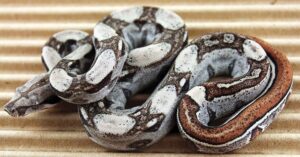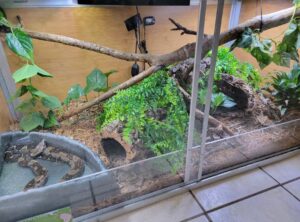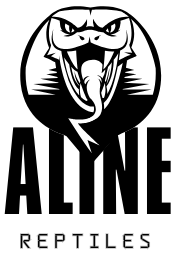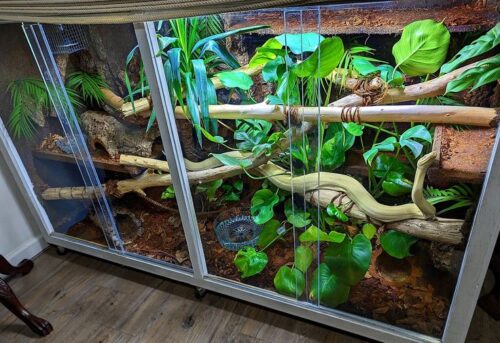When you bring a boa constrictor into your life, you’re not just adopting a pet—you’re welcoming a majestic, complex creature that needs a specialized environment to thrive. Boa constrictors are one of the most popular snake species kept as pets due to their docile nature and striking appearance.
However, creating the right enclosure for your boa is essential for its well-being. The wrong setup can lead to stress, health issues, and a reduction in lifespan, while the perfect enclosure will promote comfort, proper growth, and happiness for your snake.
Whether you’re a seasoned reptile enthusiast or a first-time boa owner, understanding what goes into creating a proper boa constrictor enclosure is crucial. In this guide, we’ll walk you through every element you need to know—size, materials, substrate, temperature, humidity, and more. By the end of this article, you’ll have the knowledge you need to build an ideal habitat for your snake.
Why Proper Boa Constrictor Enclosure Matters

A boa constrictor’s enclosure serves as its home and sanctuary. If you want a healthy, happy snake, the setup should closely resemble its natural habitat. A suitable environment will ensure that the snake feels secure, has room to grow, and remains healthy.
Health and Well-being
An enclosure that mimics the natural environment of a boa constrictor can reduce stress, enhance its physical and mental health, and even improve its lifespan. Stress caused by an improper enclosure can lead to behavioral issues, poor appetite, or illness.
Behavioral Benefits
Boa constrictors are naturally curious and active. A spacious, well-equipped enclosure provides them with opportunities to explore, climb, and hide—activities that are crucial for their well-being. Providing these outlets ensures that your boa remains content and exhibits natural behaviors.
Understanding Boa Constrictors’ Needs
To design the perfect enclosure for your boa constrictor, it’s important to understand the species’ specific needs. This will help you provide the correct habitat and avoid common mistakes that can lead to discomfort or stress.
Size and Growth
Boa constrictors can grow impressively large—up to 8 feet in length in some cases. Juvenile boas may require smaller enclosures, but as they grow, the enclosure must be upgraded to accommodate their size. For example:
- Juvenile Boa: A 40-gallon tank is typically sufficient for a juvenile boa. As it matures, the size should be increased.
- Adult Boa: Once your boa reaches adulthood, a minimum of a 6-foot long and 3-foot wide enclosure is ideal. This allows the snake to move freely and exercise.
Behavior and Habitat
Boa constrictors are semi-arboreal and terrestrial. This means they enjoy climbing, but they also spend a significant amount of time on the ground. Providing both horizontal and vertical space is crucial. Offering a combination of branches, vines, and sturdy ground features will encourage natural behavior.
Temperature and Humidity Needs
Temperature and humidity are perhaps the most critical factors in boa constrictor care. Boas need a warm environment, but too much heat or humidity can lead to stress or health issues.
- Temperature: The ideal temperature for a boa constrictor is around 80-85°F (27-29°C) during the day, with a warm spot of 88-92°F (31-33°C). At night, the temperature should drop to around 75-80°F (24-27°C).
- Humidity: Humidity should be kept between 50-70% to ensure healthy skin shedding and prevent respiratory issues. Regular misting and providing a large water dish can help maintain appropriate humidity levels.
Ideal Enclosure Size and Dimensions
Proper enclosure size is one of the most important aspects of boa constrictor care. The enclosure should not only allow your snake to move freely but also provide areas for hiding, climbing, and soaking.
Juvenile Boa Enclosure
For a baby or juvenile boa, a 40-gallon tank is a good starting point. As your boa grows, the enclosure should be upgraded to ensure it remains comfortable. Consider these dimensions for a juvenile setup:
- Size: 36” x 18” x 18” (90 cm x 45 cm x 45 cm)
- Key Features: A secure lid, a heat source on one side, hiding spots, and a water bowl.
Adult Boa Enclosure
An adult boa requires much more space—at least 6 feet long and 3 feet wide. The minimum recommended dimensions for an adult boa enclosure are:
- Size: 72” x 24” x 24” (183 cm x 61 cm x 61 cm)
- Key Features: Ample floor space, climbing branches, and secure locking mechanisms.
| Life Stage | Recommended Enclosure Size | Key Features |
|---|---|---|
| Juvenile Boa | 40-gallon tank (36” x 18” x 18”) | Hiding spots, water bowl, heat source on one side |
| Adult Boa | 6-foot long enclosure (72” x 24” x 24”) | Large space, secure locks, climbing branches, water bowl |
Choosing the Right Enclosure Type

There are multiple types of enclosures available, and each has its own benefits. When choosing the right one for your boa constrictor, consider the following options:
Pre-made Enclosures
Pre-made enclosures are easy to find and come in a variety of materials:
- Glass Tanks: Glass tanks are the most common option for boas. They provide excellent visibility and are easy to maintain. However, they may not offer the best ventilation.
- Acrylic Tanks: Acrylic tanks are similar to glass tanks but are lighter and more durable.
- Wooden Enclosures: Wooden enclosures are a good choice for larger boas, as they offer better insulation and humidity retention.
DIY Enclosures
For those who want a more customized approach or are working on a budget, DIY enclosures can be a great option. You can use materials such as wood, plastic, or PVC to build a sturdy, secure home for your boa.
Recommended Features
Regardless of the enclosure type, always ensure it has the following features:
- Ventilation: Proper airflow is crucial to prevent stagnant air and respiratory issues.
- Locking Mechanism: Boa constrictors are skilled escape artists, so the enclosure should have a secure, escape-proof lock.
- Access Panels: Ensure the enclosure has doors or panels that allow easy access for feeding, cleaning, and maintenance.
Substrates for Boa Constrictor Enclosures
Choosing the right substrate is essential for maintaining a clean, healthy enclosure. Here are some of the best options for your boa constrictor:
Best Substrates
- Aspen Shavings: A popular choice due to its absorbency and natural appearance.
- Cypress Mulch: Provides great humidity retention, making it ideal for boas that need higher humidity.
- Coconut Husk: A good option for humidity control and natural-looking substrate.
- Paper Towels: A cost-effective and easy-to-clean option, best for young boas or quarantine setups.
Substrate Depth
For boas to feel comfortable, they need a substrate depth that allows for burrowing. A depth of 2-3 inches is ideal for most boa constrictors.
How Often to Change Substrate
Change the substrate every 2-4 weeks, depending on the size of the enclosure and the number of snakes it houses. Spot cleaning should be done weekly to maintain hygiene.
| Substrate | Benefits | Drawbacks |
|---|---|---|
| Aspen Shavings | Absorbent, natural look | Needs frequent cleaning |
| Cypress Mulch | Excellent humidity retention | Can be expensive |
| Coconut Husk | Great for humidity control | Needs regular maintenance |
| Paper Towels | Easy to clean, cost-effective | Lacks natural appearance |
Setting Up Temperature and Humidity Controls
Boa constrictors require precise temperature and humidity to stay healthy. To create the ideal environment, follow these steps:
Heat Gradient Setup
A heat gradient is essential to allow your boa to regulate its body temperature. Set up your enclosure with:
- Warm Zone: Place a heat pad or ceramic heat emitter at one end of the enclosure to create a warm zone (88-92°F).
- Cool Zone: The opposite side of the enclosure should remain cooler (75-80°F) to allow the snake to thermoregulate.
Humidity Control
Maintaining the right humidity level is crucial for shedding and respiratory health. Aim for a humidity range of 50-70%. To maintain humidity:
- Use a large water dish.
- Mist the enclosure lightly once a day.
- Add humidity-retaining substrates, like cypress mulch or coconut husk.
| Temperature Zone | Target Temperature Range | Key Features |
|---|---|---|
| Warm Zone | 88-92°F (31-33°C) | Heat source (pad, lamp), warm hiding place |
| Cool Zone | 75-80°F (24-27°C) | Well-ventilated, cooler area |
Lighting Needs for Boa Constrictors
While boa constrictors do not require UVB lighting, it is still essential to simulate a natural day-night cycle. Here’s how:
Lighting Duration
Boas benefit from a 12-hour light cycle, with a period of darkness at night. You can achieve this by using a basic light timer that automatically turns lights on and off.
UVB Lighting
Although UVB lighting is not a necessity for boa constrictors, providing some low-level UVB exposure can be beneficial for their overall well-being.
Conclusion
Building the ideal boa constrictor enclosure requires attention to detail, but the benefits far outweigh the effort. By providing a spacious, well-equipped, and properly regulated environment, you ensure that your boa thrives and exhibits natural behaviors. Whether you choose a pre-made enclosure or a DIY setup, always prioritize your boa’s comfort, health, and safety.

